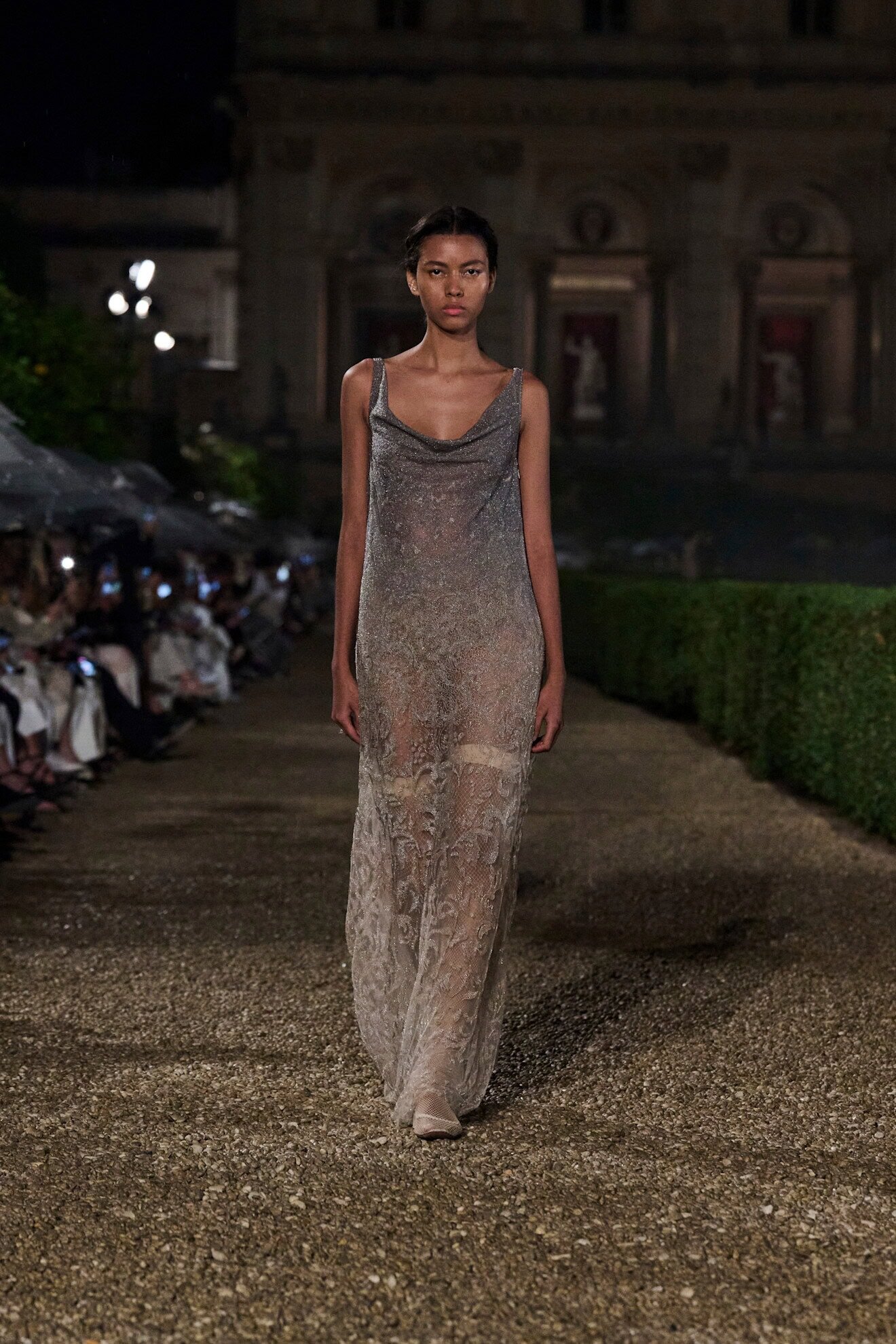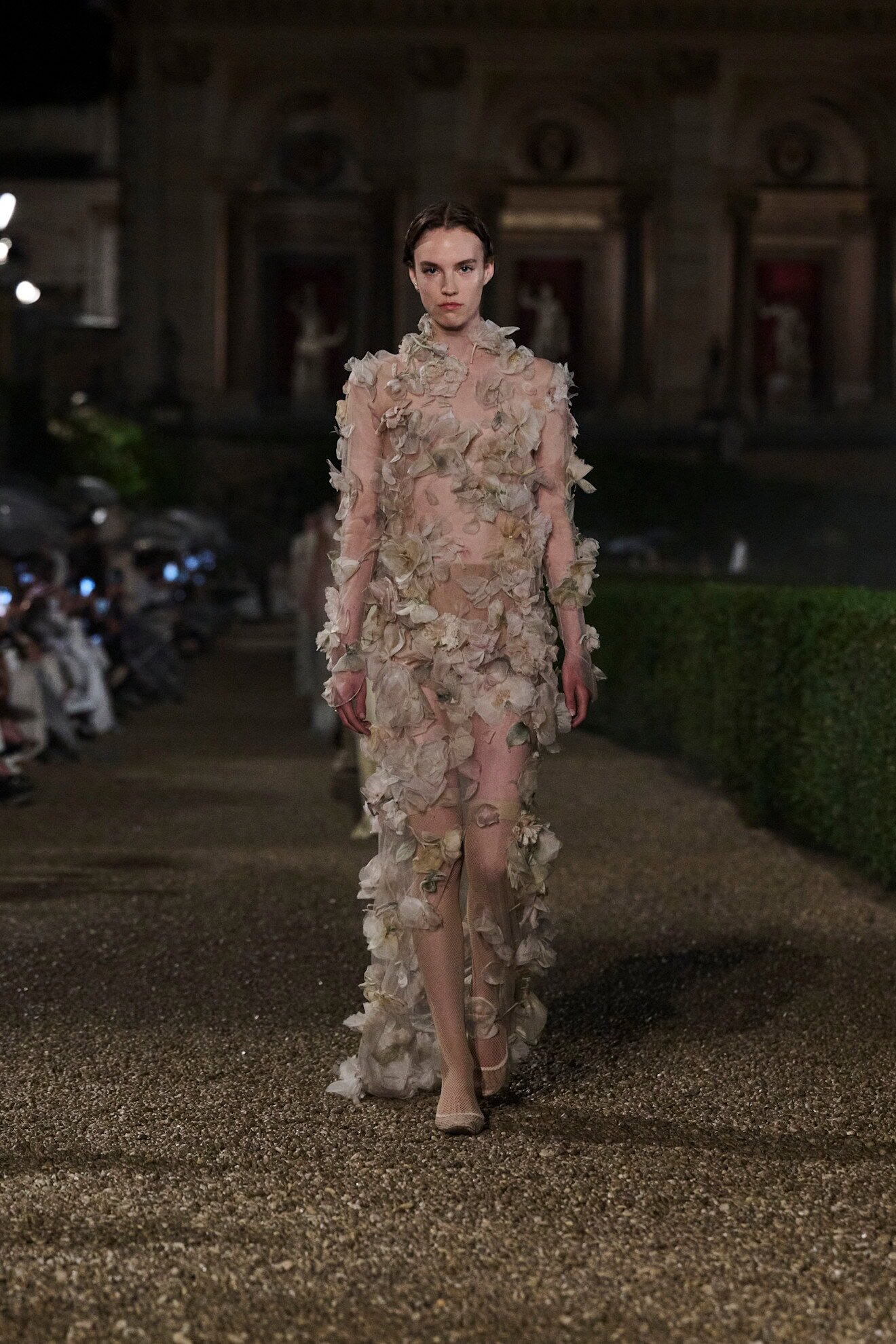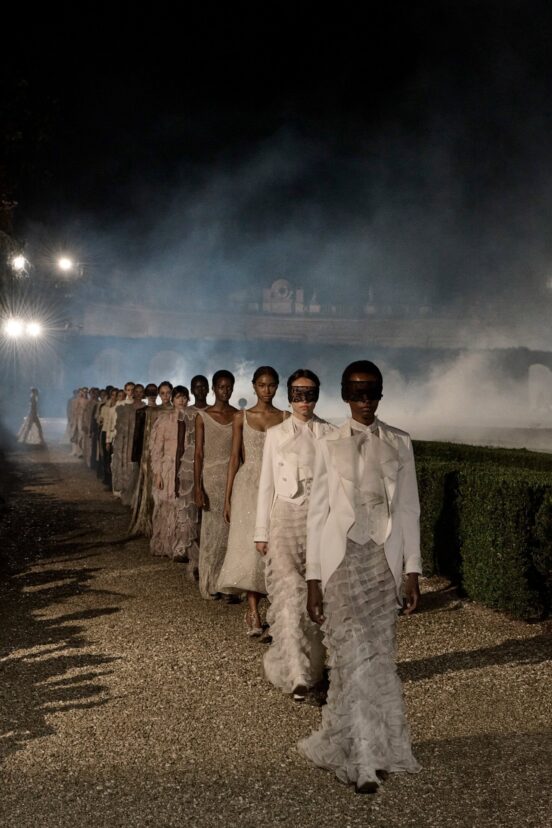Legacy in Motion
Get an exclusive look at Diors‘ Cruise 2026 fashion show from the runway, held in May 2025.
By Mackenzie Richard Zuckerman
Can a designer look squarely at the past and still move a house forward? Maria Grazia Chiuri’s Dior Cruise 2026 home-coming in Rome set out to prove that the answer is yes—or at least, that the two impulses are not mutually exclusive. Like Christian Dior himself, Chiuri is an unapologetic romantic who believes clothes should spark imagination and serve real life. But where Monsieur Dior’s fantasies were sculpted in corsetry, Chiuri’s arrive through fluid bias cuts, lace veils, and a steadfast faith in female agency. Amid speculation about succession (fueled, in part, by those lace face-shields that echoed Kim Jones’s menswear farewell), Chiuri offered something less gossipy and more tangible: a layered love letter to Rome, to cinema, and to the women who turn history into possibility.
THE COLLECTION
THE VIBE
Living-Archive Glamour, Feminine Agency, & Roman Memory
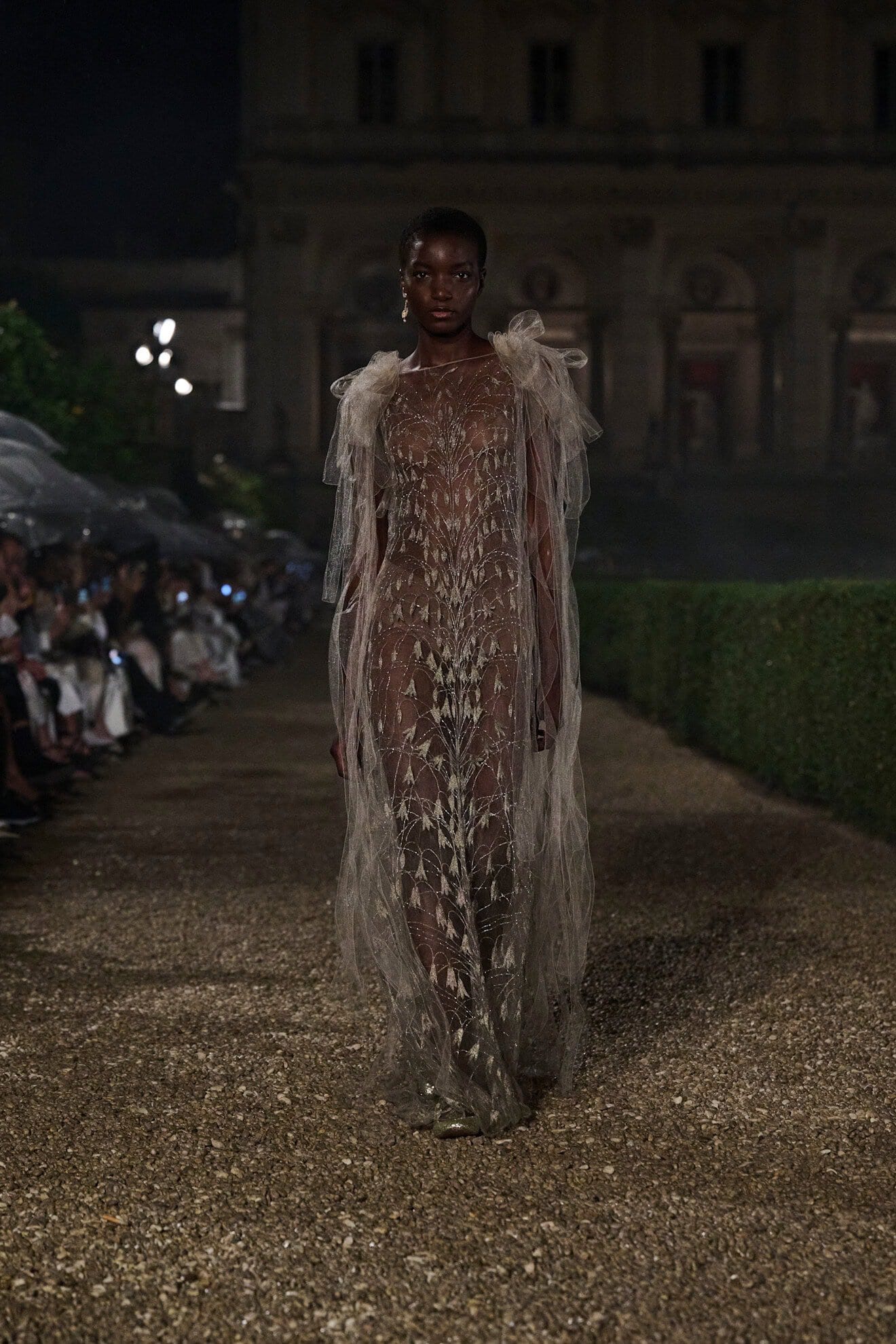
Rather than a tally of silhouettes, Chiuri offered a meditation on how memory can animate the present. Her “bella confusione” was less about visual eclecticism than about collapsing timelines: ancient Rome, Fellini’s Cinecittà, feminist Rome of the 1970s, and today’s relentless now all co-exist without hierarchy. By asking guests to dress in white and populating the gardens with Tirelli-clad “ghosts,” she turned the runway into a living archive, suggesting that culture itself is a continual séance—we summon what we need from the past, then let it haunt us forward.
Central to that proposition was Chiuri’s conviction that femininity is not a style but a strategy. She used Catholic, cinematic, and aristocratic symbols—lace veils, cardinal reds, masked balls—not to fetishize power structures, but to recast them through a female lens. In her hands, vestments become agency, theatrics become testimony, and romance becomes a political position: the right to self-mythologize. The collection therefore functions less as a seasonal wardrobe and more as a manifesto on authorship—an argument that women, like cities, are palimpsests where histories overlap, erasures speak, and futures can be drafted in real time.
By staging this dialogue in Rome, Chiuri underscored fashion’s capacity to be both civic and personal. Villa Albani Torlonia was not just backdrop; it was proof that place shapes narrative and that heritage, when consciously inhabited, is a renewable resource rather than a nostalgic trap. In short, Cruise 2026 reframed Dior not as a house of preserved signatures, but as a studio of living stories—each collection a new chapter written atop centuries-old marble.
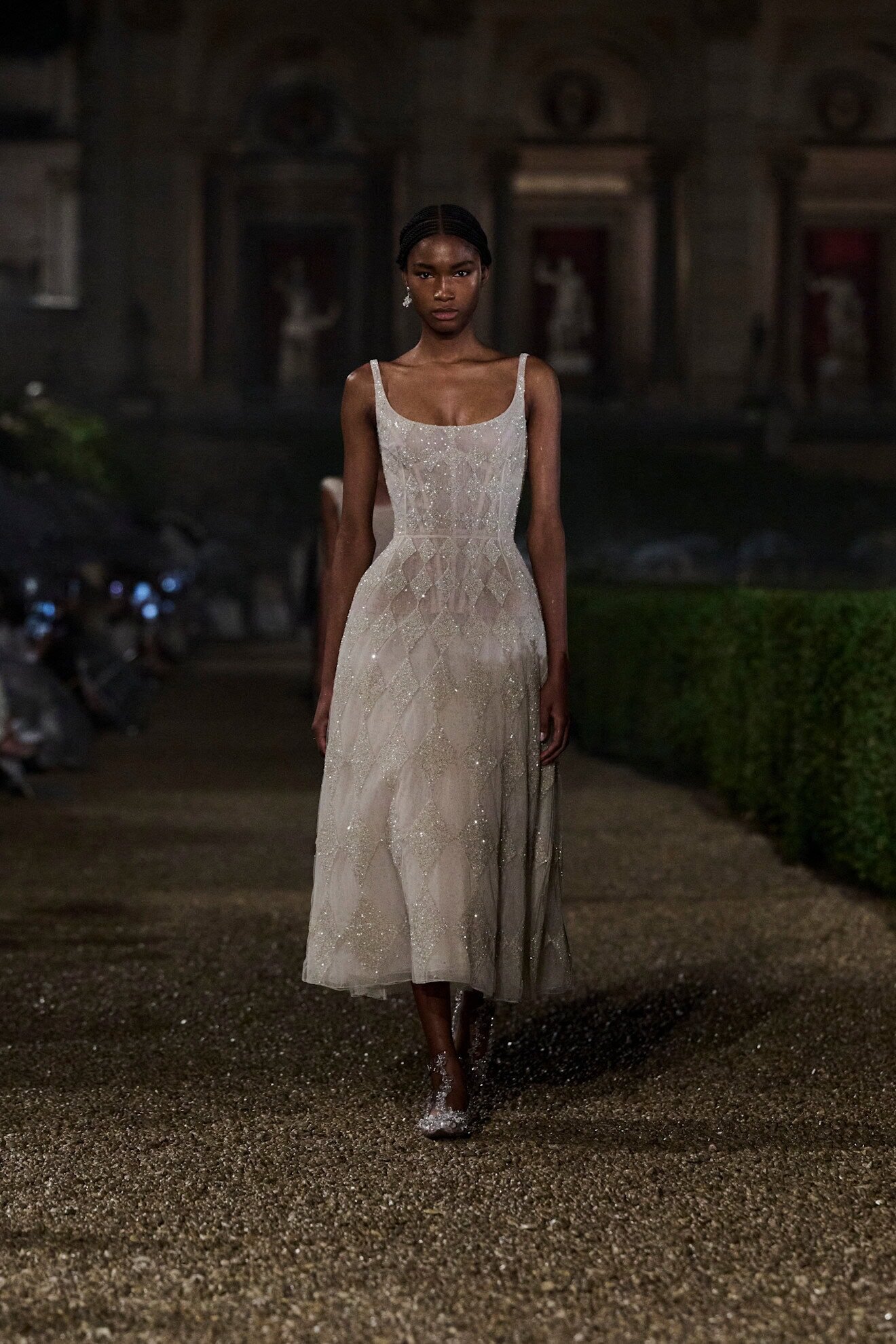
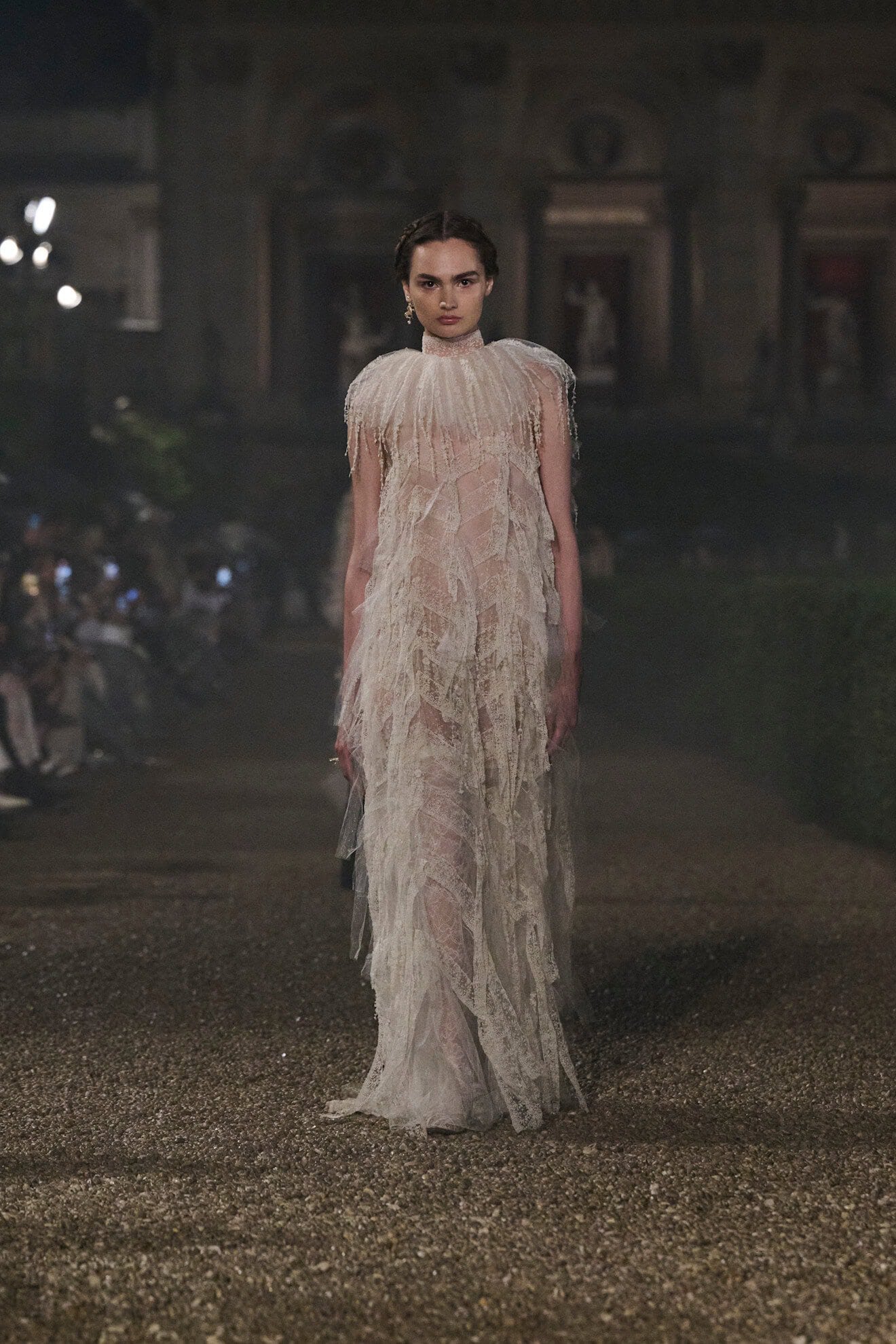
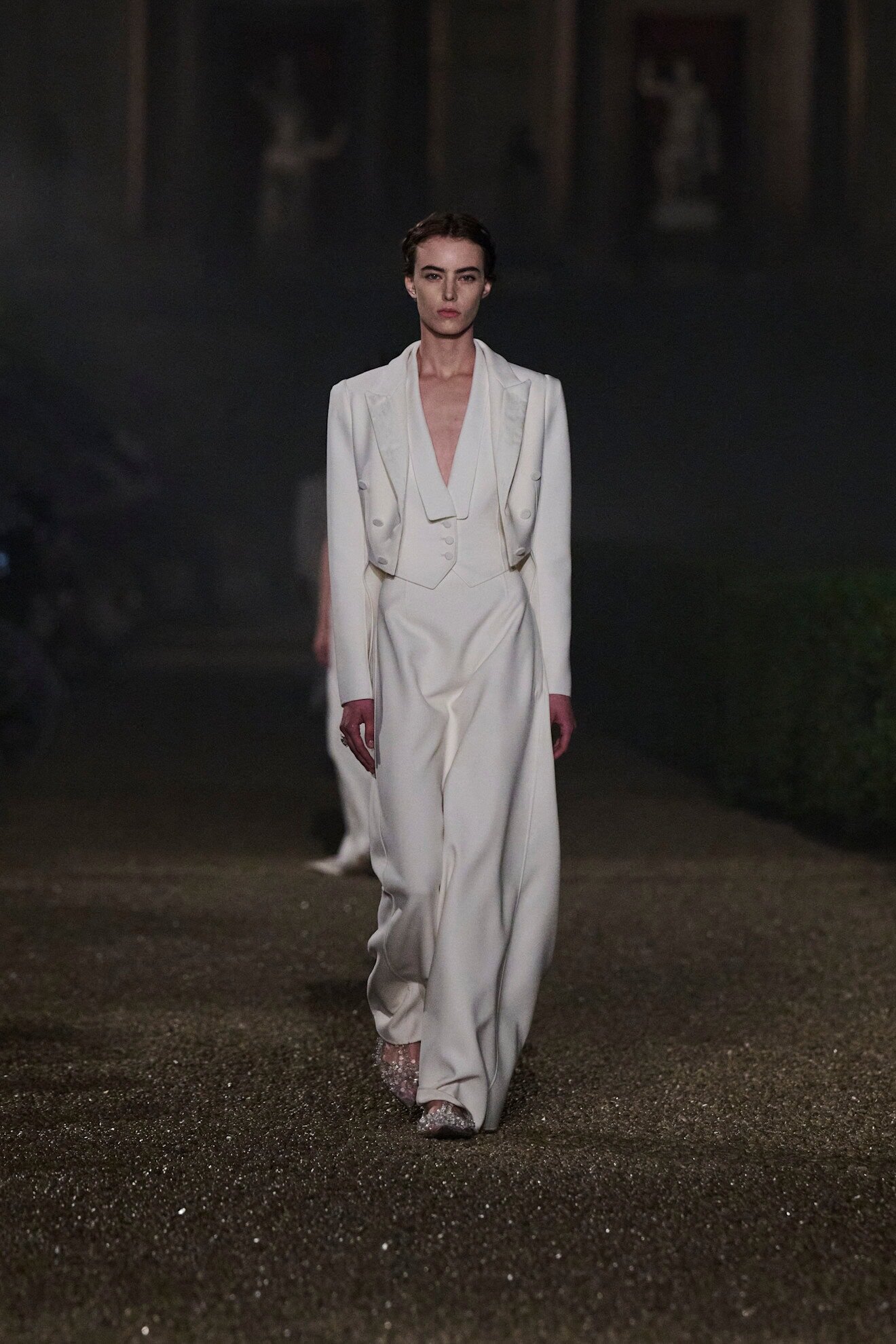
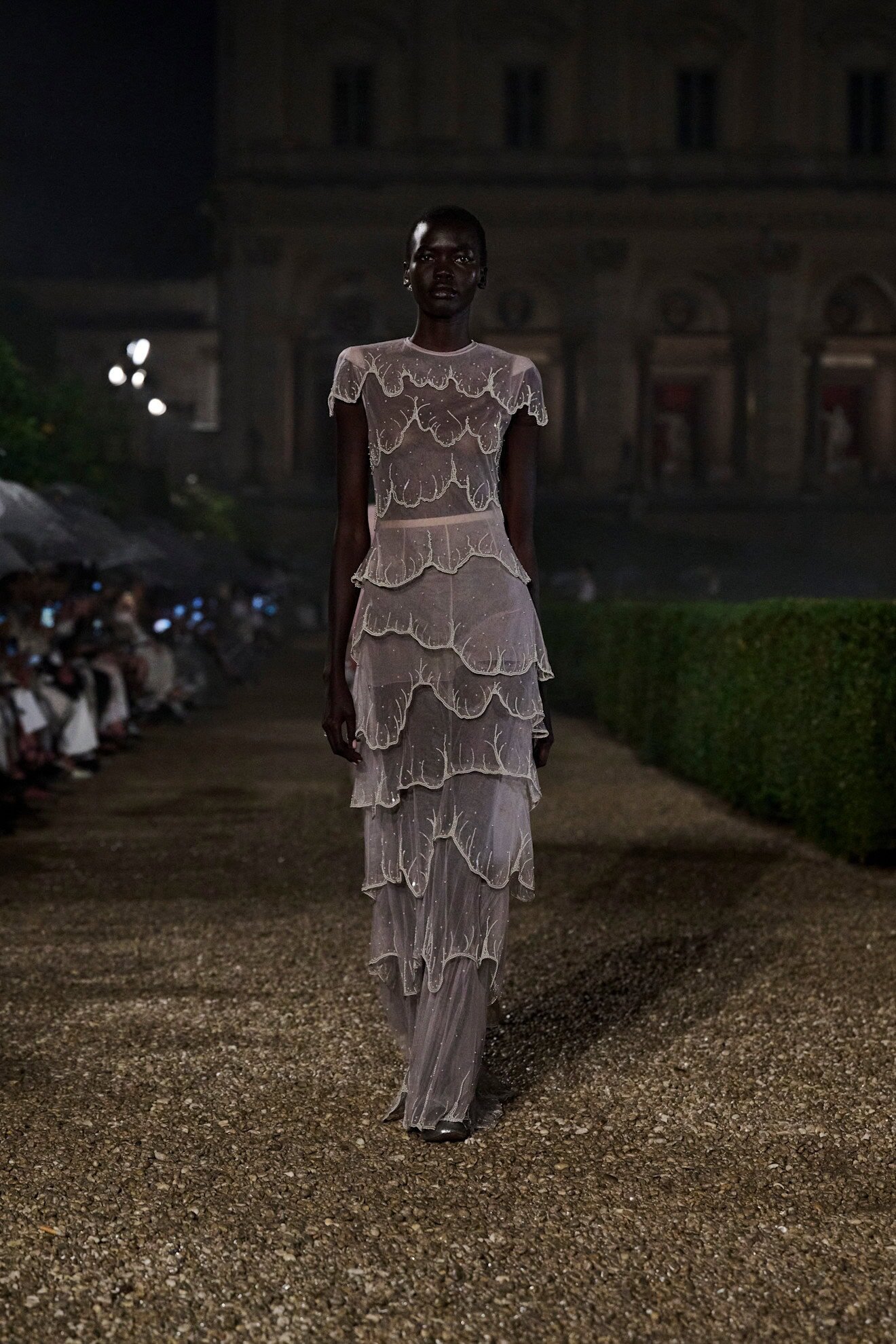
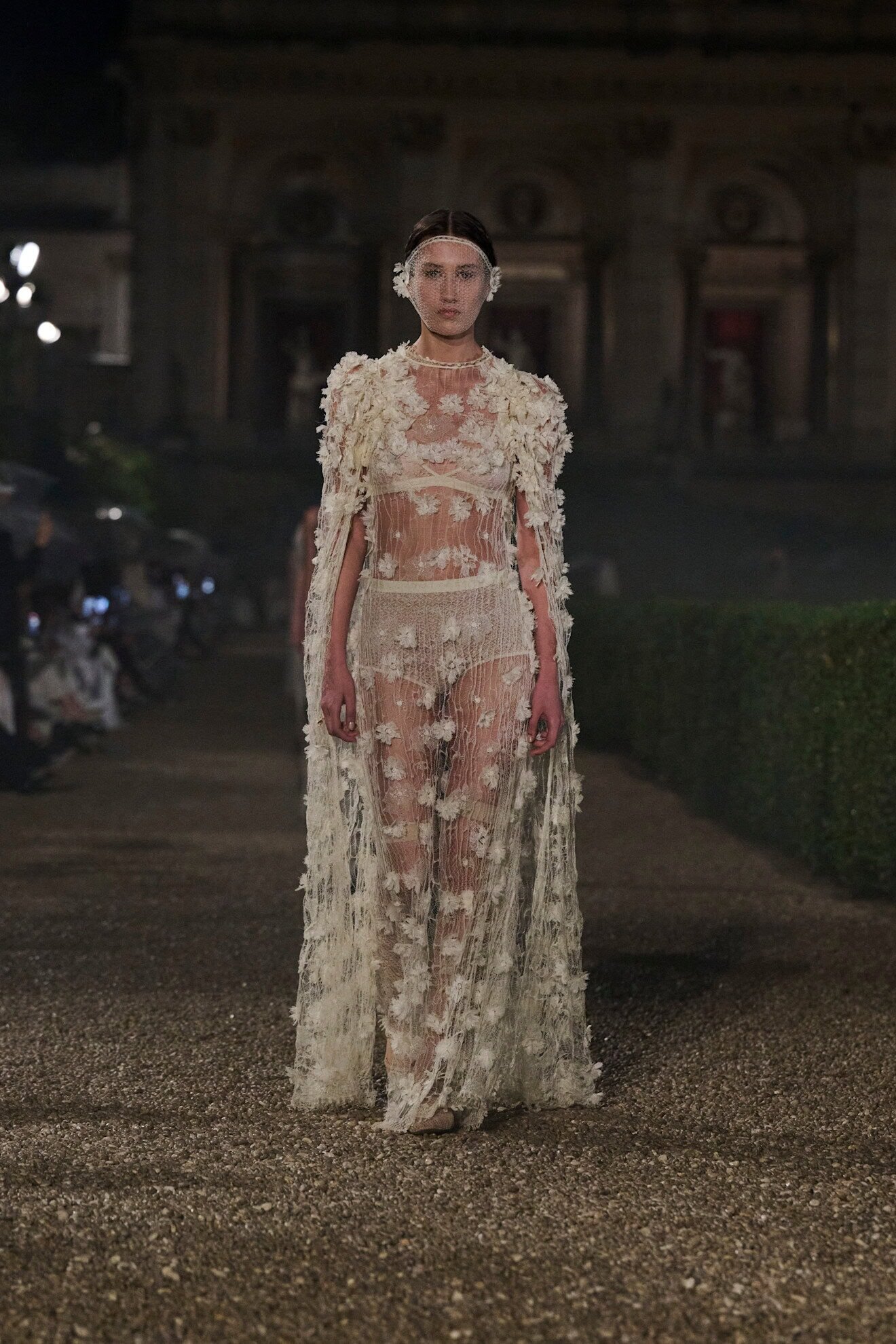
THE DIRECTION
THE WRAP UP
Cruise 2026 may not silence the succession rumours, but it does remind us why Chiuri’s nine-year tenure matters. She can translate Dior’s foundational romance into something at once theatrical, beautiful, and—crucially—practical. If this is indeed a pre-finale, she leaves the stage with a pointed message: heritage is not a set of static codes but a living screenplay, ready for new protagonists. Whether the next act belongs to her or to someone else, the script she delivered in Rome proves that looking back can still be the quickest way to move forward.
